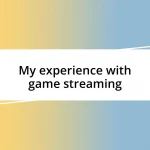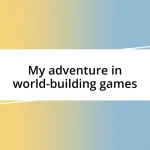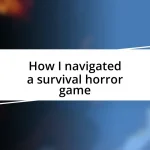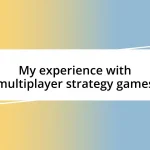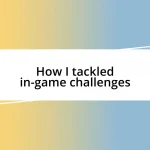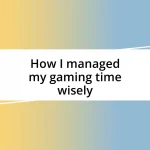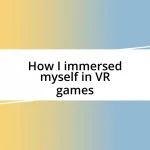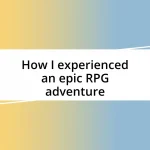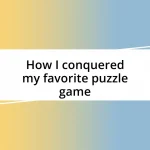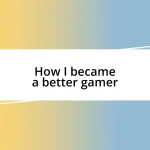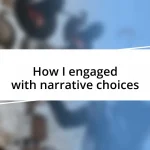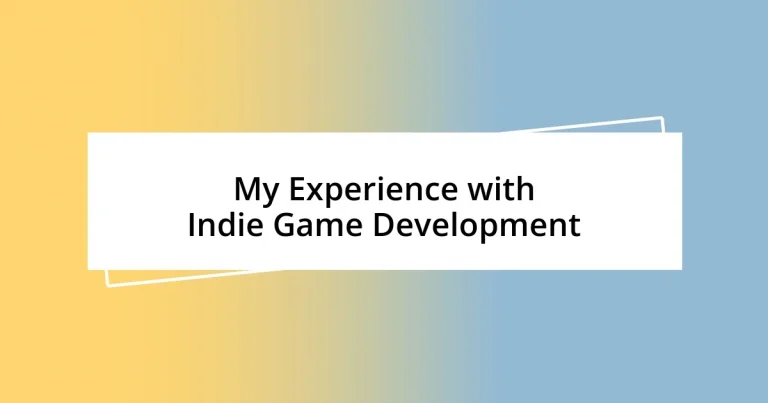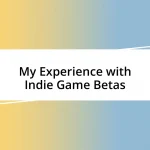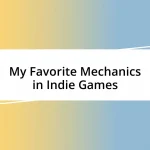Key takeaways:
- Indie game development emphasizes creativity and personal storytelling, allowing developers to connect deeply with players through their experiences.
- Choosing the right game engine is crucial; it should align with project needs and the developer’s skill level, with popular choices including Unity, Unreal, and Godot.
- Effective marketing involves building a community, creating shareable content, and leveraging direct communication with potential players through email lists.
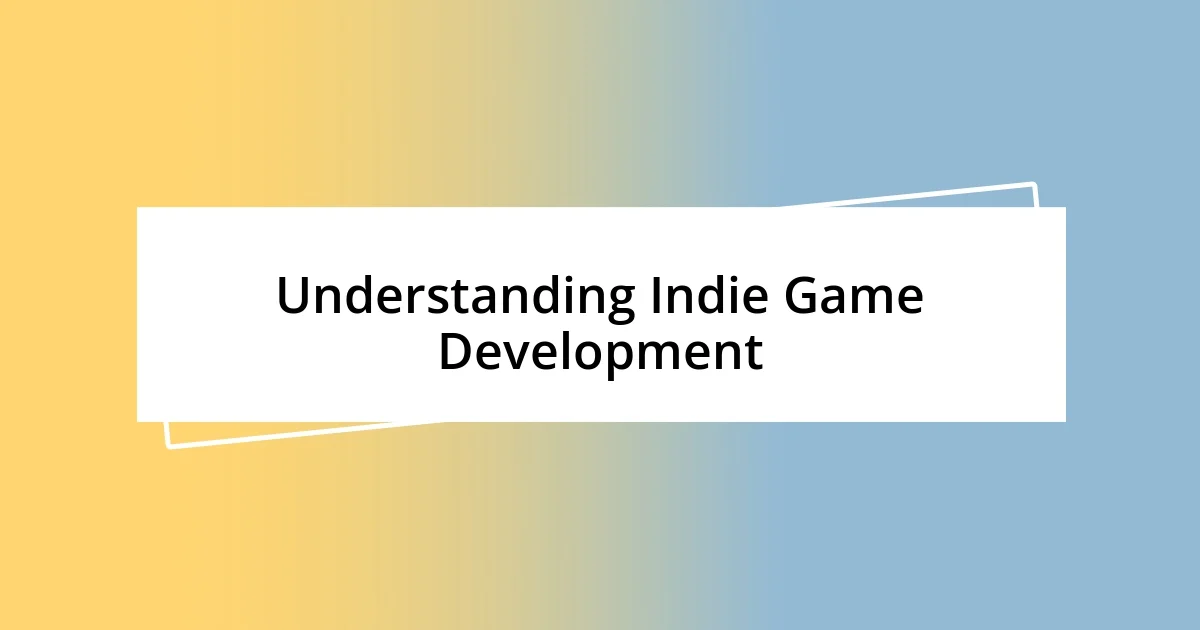
Understanding Indie Game Development
Indie game development is like stepping into a universe where creativity reigns supreme. I remember diving into my first project and feeling an exhilarating mix of excitement and fear. What if I couldn’t bring my vision to life? That fear turned into motivation as I learned the ropes—and realized that the freedom to experiment was the very essence of the indie spirit.
In my journey, I discovered that indie developers often wear many hats. We’re not just creators; we’re also marketers, project managers, and community builders. I spent countless hours not only coding but also engaging with players and seeking feedback. Have you ever felt the thrill of a player enjoying your game? It’s an irreplaceable feeling that underlines the importance of connection in this field.
What strikes me most about indie game development is its personal touch. Unlike big studios, we craft stories drawn from our own experiences and emotions. For example, I poured my struggles with anxiety into a character’s journey, hoping others might find solace in it. This passion fuels the entire process, reminding us that our games can resonate deeply with players, ultimately creating a shared experience.
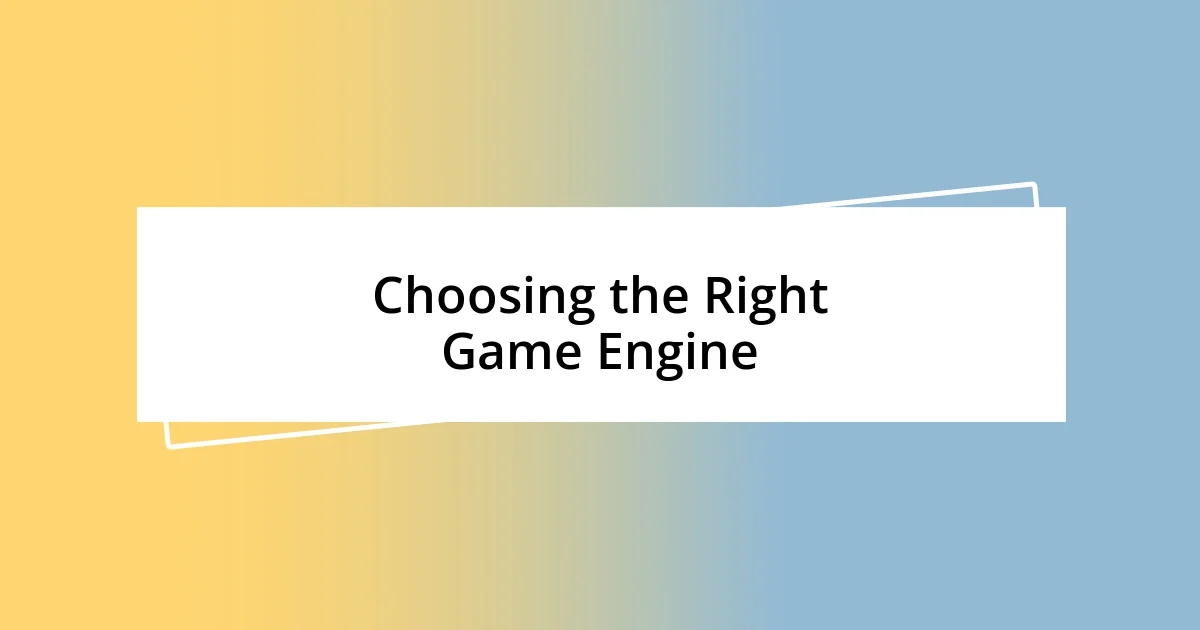
Choosing the Right Game Engine
Choosing the right game engine can feel daunting, especially with so many options available. From my experience, I found that selecting an engine should align with your project’s needs and your skill level. For example, I started with Unity because of its widespread community support and extensive resources—it helped me troubleshoot countless issues and learn more efficiently.
While exploring other engines like Unreal and Godot, I noticed distinct differences in their capabilities. Unreal offers stunning graphics straight out of the box, which initially attracted me, but I realized that its complexity required a steeper learning curve. On the other hand, Godot felt more lightweight and nimble, making it a joy to experiment with. Each engine has its strengths, but aligning those with your goals can transform your development experience.
Here’s a quick comparison of popular engines I researched:
| Engine | Best For |
|---|---|
| Unity | 2D & 3D games, robust community support |
| Unreal | High-quality graphics, AAA game development |
| Godot | Lightweight, open-source, easy to learn |
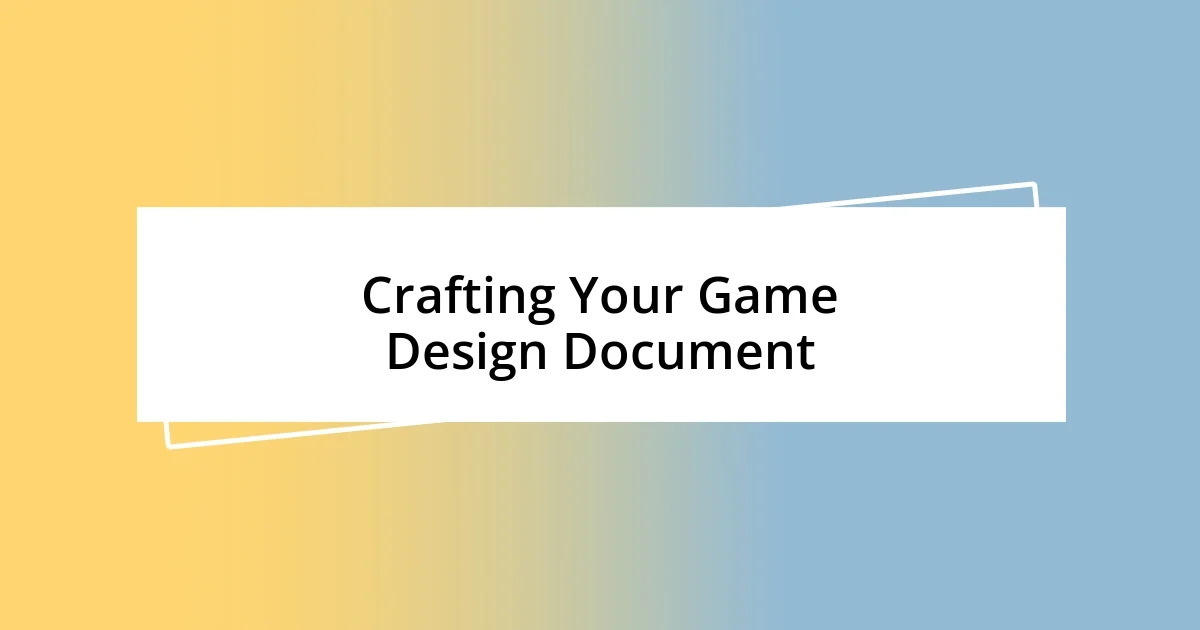
Crafting Your Game Design Document
Creating a Game Design Document (GDD) is one of those pivotal steps that can shape the entire development process. I remember the first time I tackled a GDD; it felt like drafting a blueprint for a rollercoaster I wanted to build. The excitement was palpable, but so was the fear of missing out on crucial details. Having a clear GDD helped me stay organized and focused, ensuring that I didn’t lose sight of my vision amidst the chaos of development.
A well-crafted GDD should include several key components to guide you through the journey. Here’s what I think every GDD should cover:
- Game Concept: A brief overview of what your game is about, including its genre, theme, and core mechanics.
- Target Audience: Defining who you’re making the game for helps in tailored design decisions.
- Gameplay Mechanics: Detailed descriptions of how players will interact with the game, including controls and objectives.
- Art Style and Design: Insights into the visual elements that will set the tone and feel of your game, from character designs to environments.
- Narrative and Worldbuilding: A synopsis of the story and the universe where your game takes place, creating a rich context for players.
- Development Timeline: Milestones and deadlines can keep you on track and accountable.
Taking the time to formulate these sections in your GDD can turn what feels like an overwhelming task into a manageable roadmap for success, which is the kind of clarity I wish I had from the start.
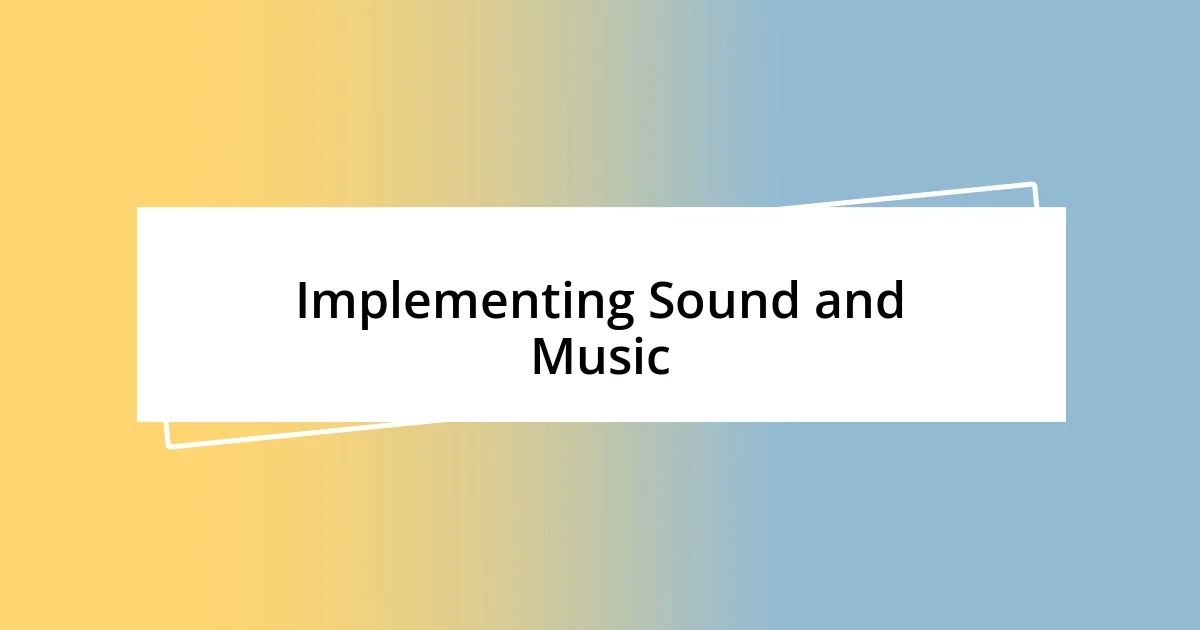
Implementing Sound and Music
When I finally started implementing sound and music in my game, it felt like breathing life into my creation. I remember sitting in my small home office, headphones on, experimenting with different audio assets to find the right mood. Choosing the perfect sound effects for each action made a world of difference; suddenly, a simple jump felt exhilarating. Have you ever noticed how the right sound can evoke an immediate emotional response? It’s fascinating!
I decided to use a combination of royalty-free music and some original compositions. I found that using a music track that reflected the game’s theme not only enhanced the experience but also created a deeper connection with players. I was particularly proud of a suspenseful track I worked on for a boss fight. The way the tension built in the music kept players on the edge of their seats, much like a well-crafted movie score. Music adds layers, weaving emotions into the gameplay that words simply can’t capture.
Incorporating sound design can sometimes be daunting, but it’s rewarding. When I started working on background ambiences, the world felt more immersive; adding subtle sounds like wind rustling or distant animal calls transformed a static environment into a living one. Have you ever been so engrossed in a game that you felt like you were really there? That’s the magic of sound and music in game development—the ability to transport players into another world and make them feel part of the adventure.
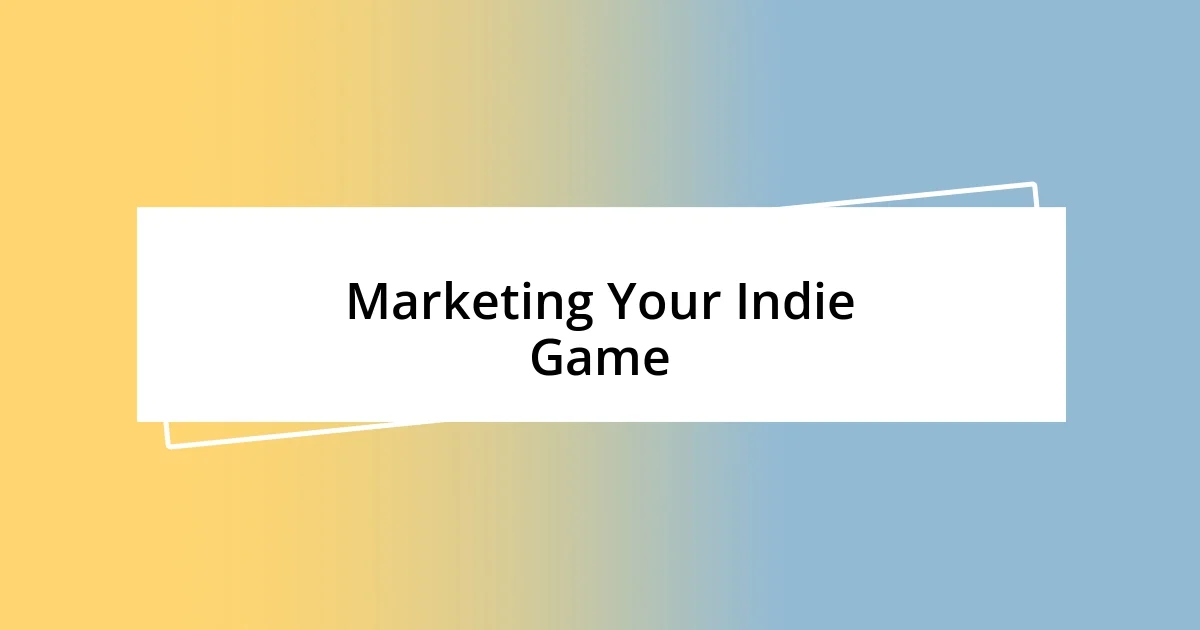
Marketing Your Indie Game
Marketing an indie game can feel like wandering through a vast, unmarked forest, unsure of which direction to take. I vividly remember posting my first teaser on social media—my heart raced at the thought of potential feedback. Engaging with communities on platforms like Reddit or Discord was eye-opening; suddenly, I wasn’t alone in my journey. Connecting with other indie developers not only provided support but also valuable insights into effective marketing strategies.
One approach that really resonated with me was creating shareable content. I began crafting behind-the-scenes videos, showcasing the development process of my game. Honestly, I never expected such an enthusiastic response! These glimpses into my creative journey didn’t just help market the game; they fostered a sense of community. It got me thinking: Have you ever felt a stronger connection to a creator because you shared their ups and downs? This personal touch can humanize your project and invite players to cheer you on.
I also discovered the importance of building an email list early on. I started collecting emails during my alpha testing phase, which provided a direct line to my audience. It was both exciting and a bit nerve-wracking to send out updates, but seeing people engaged and eager for news about the game felt validating. Gaining dedicated followers who were genuinely interested in my progress was an unexpected treasure, turning what could have felt like a solitary journey into a collaborative adventure.
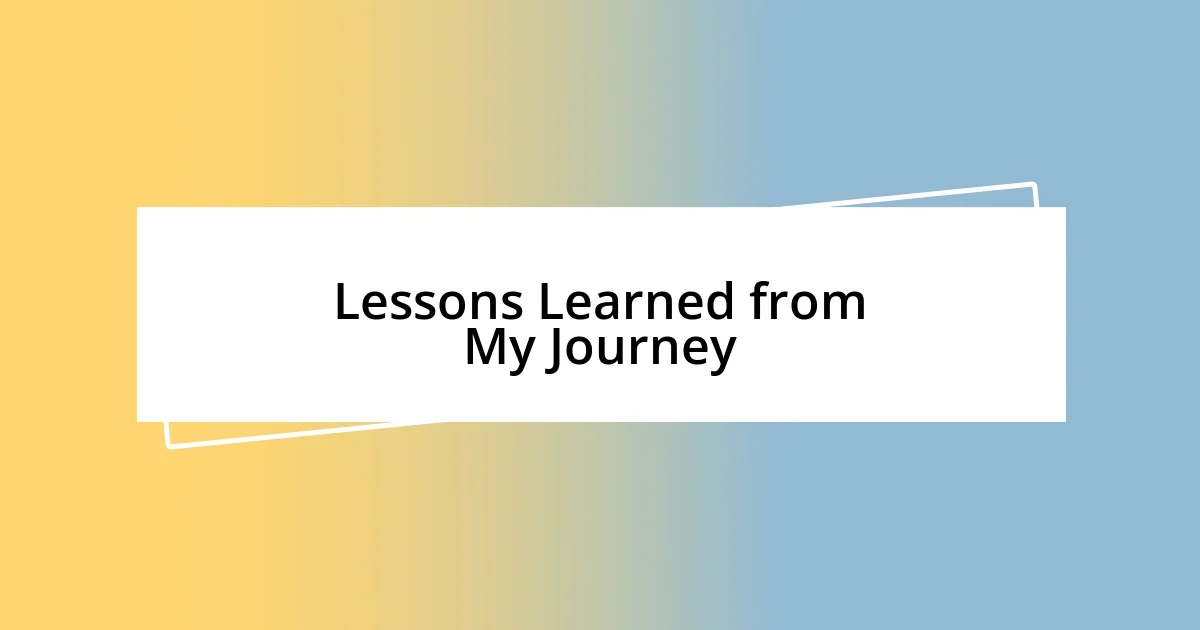
Lessons Learned from My Journey
Throughout my indie game development journey, I learned that patience is not just a virtue—it’s essential. There were days when I felt overwhelmed by bugs and glitches that seemed insurmountable. I remember one night, I spent hours troubleshooting a single issue, and just when I was ready to throw in the towel, I discovered a simple code error. That moment of clarity taught me to embrace the struggle and remind myself that persistence often leads to breakthroughs.
Another important lesson was the power of feedback. Early on, I hesitated to share my work for fear of harsh criticism; however, I soon realized that constructive criticism is a gift. On one occasion, a friend played my game and suggested changes to the gameplay mechanics. Initially, I was resistant, thinking my idea was perfect. But after implementing those suggestions, the game became so much more engaging! Have you ever overlooked something that others could see clearly? That experience truly opened my eyes to the value of collaboration.
Finally, I discovered that self-care is crucial in this creative process. There were times when I pushed myself too hard, sacrificing my well-being for deadlines. I vividly recall a late-night coding session that turned into a marathon—only to find the next day that I was too tired to think clearly. I learned to schedule breaks and step away from my screen, allowing my mind to recharge. It’s a balancing act, isn’t it? Taking time for yourself can lead to greater creativity and better decision-making in the long run.
